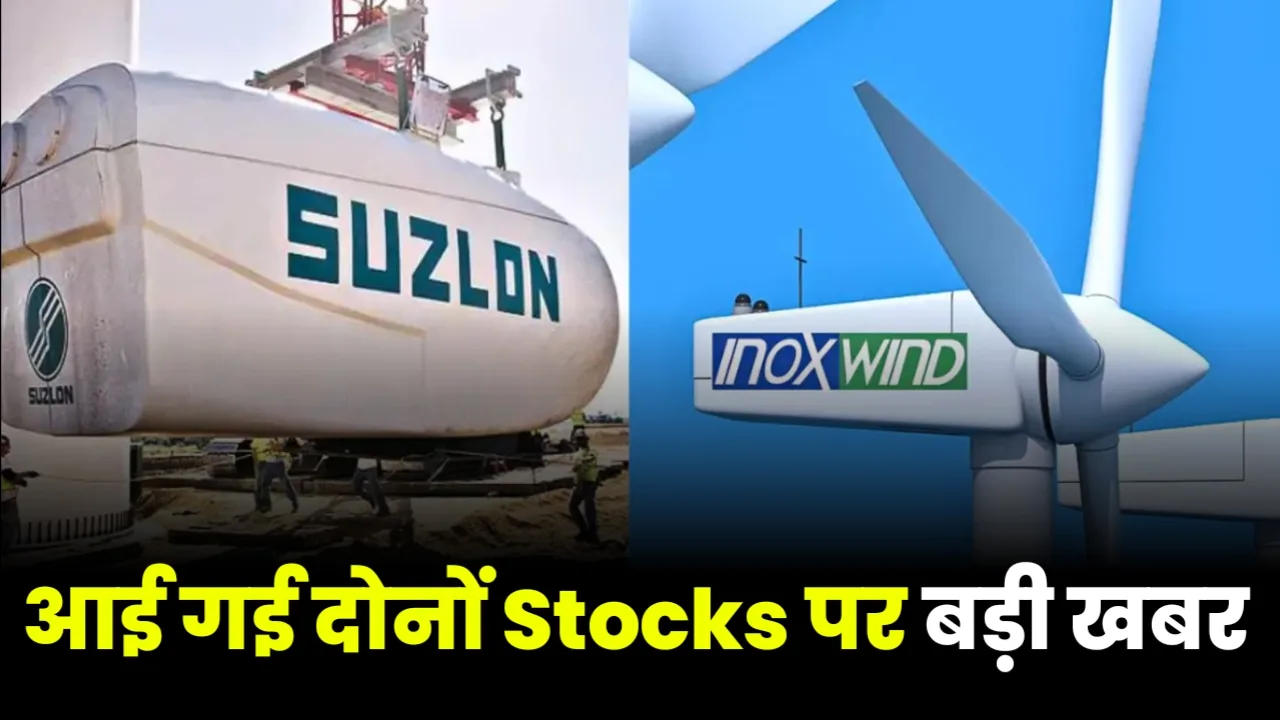Comparing Suzlon Energy and Inox Wind, two of India’s leading renewable energy companies in the wind sector, investors are often curious about their financial stability, growth potential, market position, and long-term prospects in India’s green energy transition. Here’s a comprehensive look at these companies to help investors make informed decisions.
1. Company Background and Market Position
- Suzlon Energy: Established in 1995, Suzlon is a pioneer in India’s wind energy sector and has grown to become one of the leading renewable energy solutions providers, with operations in multiple countries. Suzlon has a strong track record in wind turbine manufacturing and project execution, positioning it as a household name in India’s wind energy space.
- Inox Wind: Inox Wind, part of the Inox Group, was founded in 2009 and has quickly established itself as a prominent player in wind turbine manufacturing and project development. Although newer than Suzlon, Inox has gained market presence by focusing on cost-effective, technologically advanced turbines tailored for Indian conditions.
2. Financial Performance
- Suzlon Energy: Suzlon has faced financial challenges in the past due to heavy debt loads and restructuring, which led to fluctuations in stock performance. Recently, Suzlon’s financial health has improved with reduced debt and increased focus on profitability, but its overall debt level remains a consideration for risk-averse investors.
- Inox Wind: Inox Wind’s financials are generally more stable, given the company’s relatively lower debt levels. Inox also has the backing of the broader Inox Group, which offers financial resilience and credibility. However, Inox has faced its share of challenges with delays in projects and order execution, impacting revenue growth.
- Financial Performance: Suzlon reported a Q1 FY25 revenue of ₹1,480 crore and a net profit of ₹121.14 crore, whereas Inox Wind had a revenue of ₹607 crore and net profit of ₹70.19 crore for the same period. Suzlon has a P/E ratio of 530.37, which is considerably high, reflecting strong investor confidence but also implying the stock may be priced high relative to its earnings. In contrast, Inox Wind’s P/E ratio is negative due to past losses, indicating more volatility in its earnings growth.
- Market Capitalization: Suzlon’s market cap is around ₹1.13 trillion, which is more than triple that of Inox Wind, whose market cap is approximately ₹33,100 crore. This disparity suggests Suzlon holds a more substantial position in the market, possibly offering stability for investors who prefer a more established company in the sector.
- Returns to Investors: Both companies have delivered strong returns, but Suzlon has outperformed Inox with returns of over 221% in the past year. This rapid increase is attributed to new order acquisitions, effective debt management, and Suzlon’s resurgence in the market following restructuring.
- Business Focus: Suzlon has been diversifying and consolidating its operations to increase its renewable energy capacity, while Inox Wind remains more focused on EPC (Engineering, Procurement, and Construction) services in wind energy. Suzlon’s broader strategy may provide resilience against market fluctuations.

3. Market Share and Revenue Sources
- Suzlon Energy: Suzlon commands a larger market share, especially in India, due to its established presence and proven track record. Suzlon’s revenue is diversified across multiple segments, including manufacturing, operations and maintenance (O&M), and project development.
- Inox Wind: Inox Wind, while newer, has steadily increased its market share and is a strong competitor in turbine manufacturing and project execution. Inox’s revenue largely stems from turbine sales and turnkey project development, and it is increasingly moving toward O&M services to capture more stable income streams.
4. Technology and Innovation
- Suzlon Energy: Suzlon has a reputation for innovation, particularly in adapting turbine designs suited to India’s diverse wind conditions. Suzlon is also investing in hybrid energy solutions, such as integrating solar with wind, to provide more comprehensive renewable energy options. The company’s focus on low-wind turbines positions it well in regions with modest wind resources.
- Inox Wind: Inox focuses on designing efficient, high-capacity turbines optimized for India’s market. Its technology partnerships with global players have strengthened its offerings, and it is actively working on improving turbine efficiency and project timelines. However, its R&D investment is smaller compared to Suzlon’s, which could impact its long-term competitiveness in innovation.
5. Long-Term Growth Potential
- Suzlon Energy: Suzlon has the advantage of scale and presence in multiple geographies, which aligns well with India’s ambitious renewable energy goals. As the government pushes for more renewables, Suzlon’s experience and infrastructure position it to capitalize on these opportunities. Its recent financial restructuring has also improved its growth outlook.
- Inox Wind: Inox Wind is better positioned for stable growth due to its relatively healthy balance sheet and lower debt. Inox is also expanding its footprint in India and potentially outside, which could drive revenue growth. However, it still needs to scale to match Suzlon’s extensive reach.
6. Environmental, Social, and Governance (ESG) Focus
- Suzlon Energy: Suzlon’s ESG initiatives are well-developed, with a strong commitment to sustainable practices and community engagement, particularly in rural areas where its projects are based. Suzlon is also focused on minimizing its environmental footprint through sustainable turbine design and recycling programs.
- Inox Wind: Inox is committed to sustainability, though its ESG profile is still developing relative to Suzlon. As part of the Inox Group, it benefits from established corporate governance practices. However, Inox needs to enhance its visibility in ESG efforts to match Suzlon’s community-focused approach.
7. Investment Risks
- Suzlon Energy: Investors should consider Suzlon’s higher debt and history of financial restructuring, which may impact stock performance. Its reliance on the Indian market also exposes it to policy and regulatory changes. Suzlon’s volatile stock price reflects these risk factors.
- Inox Wind: While Inox has lower debt, it faces risks related to project delays and execution efficiency. Given its smaller scale, Inox may face competitive pressures from larger players in the sector, impacting its ability to grow its market share.
8. Stock Performance Comparison
| Parameter | Suzlon Energy | Inox Wind |
|---|---|---|
| Founded | 1995 | 2009 |
| Market Position | Leader in India | Fast-growing competitor |
| Debt | Higher debt, restructuring phase | Relatively lower debt |
| Revenue Sources | Diverse, including O&M | Turbine sales, turnkey projects |
| Innovation | Strong in R&D and hybrid models | Efficient turbine tech |
| ESG Commitment | High | Moderate, developing |
| Stock Volatility | Higher due to restructuring | Moderate |
| Growth Potential | High with restructuring benefits | Stable growth trajectory |
Conclusion
Both Suzlon Energy and Inox Wind present promising opportunities in the renewable energy space, but they cater to different investor preferences. Suzlon may appeal more to investors with a higher risk tolerance, given its restructuring and growth initiatives. Inox Wind might be a better choice for conservative investors seeking stable growth with lower exposure to debt.




